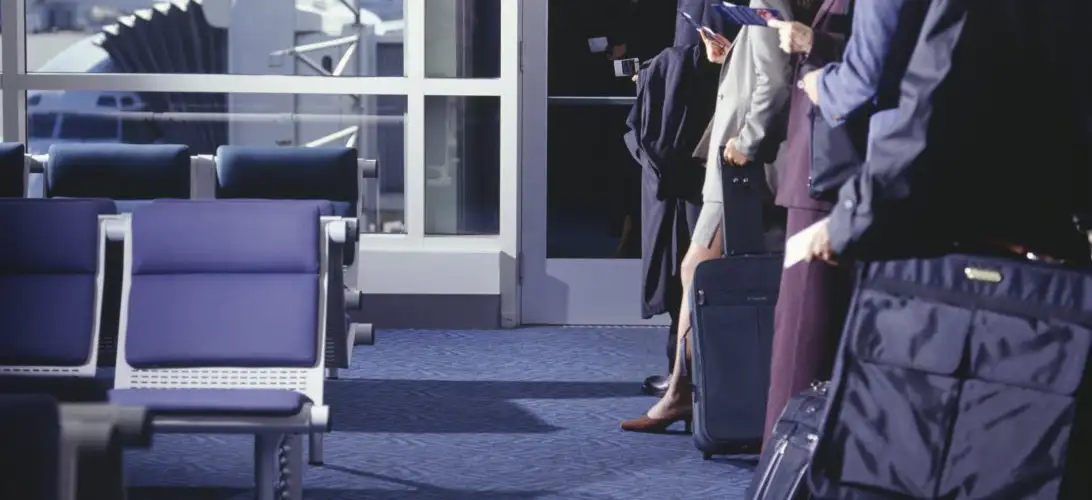
Two weeks ago, my column focused on how the main U.S. airlines deal – or fail to deal – with oversized travelers. That story evoked quite a few comments and questions, with diametrically opposing slants:
“It’s not my fault that someone else might be obese, so why should I have to give up any of my minimal seat space to an oversize seatmate?”
“Many travelers are overweight for medical or genetic reasons – why should they be penalized?”
{{{SmarterBuddy|align=left}}}Unfortunately, I see no win-win solution to this problem. Both sides of this dispute have validity, but no single approach can accommodate both views. And, as a consumer, you can’t do much to avoid difficulty, one way or another.
Size – the Big Problem
The crux of the problem is easy to state: People are getting bigger, while airline economy seats are getting smaller. The only really comprehensive anthropometric study of airline seats and passengers I’ve seen, published in 2001 and no longer available online, showed that, even then, regular economy seats were already at least two inches too narrow at shoulder level to accommodate American men comfortably in a full plane. Since then, the men have grown larger while the seats have stayed the same or gotten narrower. Similarly, seats were already too narrow at seat cushion level to accommodate American women.
Americans, as measured, were at least an inch wider than any other national or ethnic group studied. Certainly, some of that above-average girth is due to true obesity and caused by some combination of bad diet and inadequate exercise. But some of the size is based on genetics and nutrition, and medical problems cause others to gain weight regardless of dietary discipline.
The “Right” to Travel
Several of the responses to the first column stated or implied that everyone had a “right” to travel. Moreover, they claimed, airlines were guilty of discrimination if they demanded that oversize travelers pay extra.
I’m not a lawyer, but my reading of the literature leads me to conclude that people do not have an inherent “right” to travel on domestic airlines. In excusing what many view as a violation of personal privacy, the security folks say that because travel is not a right they have a legal authority to exceed what would normally breach constitutional search limitations.
- The Everyone-Is-Entitled-To-A-Seat Position: All U.S. airlines operate under a “certificate of public convenience and necessity,” so they should be required to offer their services to anyone willing to pay the price, without discrimination. Moreover, many claim that, at least in some cases, obesity should be viewed as a disability, and governing regulations require airlines to accept passengers with disabilities without charging extra or otherwise discriminating against them.
- The Everyone-Is-Entitled-To-His-Or-Her-Whole-Seat Position: Those on the other side of the problem – travelers who find themselves squeezed by oversized seatmates – claim they shouldn’t suffer because someone else is obese. Their contract with the airline entitles them to 100 percent of a seat, not the 90 percent or 80 percent or maybe 70 percent of a seat left after an obese traveler spills over into their limited space. An airline’s failure to protect them against the encroachment is a violation of their contract of carriage.
My original call – confirmed after booth review – is that the most fundamental “right” here is the right of a traveler to 100 percent of the seat space he or she occupies. That’s the contract a traveler has with an airline, and the airline should honor it. It trumps any claims that oversize travelers have to intrude on someone else’s seat. Oversize travelers have the right to an equitable solution, but not necessarily one that doesn’t cost more.
The Least-Worst Solution
Clearly, solving the problem is more productive than arguing about relative “rights.” And as I noted last time, I believe that Southwest‘s approach is the fairest to both sides:
- Oversize travelers who can’t fit in a regular seat with the armrests down and seatbelt fastened must buy two seats, which Southwest offers at the same fare as originally paid.
- If the flight isn’t full, Southwest refunds the cost of the second seat.
The only time an oversize person actually has to pay extra is when occupancy of that second seat deprives someone else of a seat and deprives Southwest of the revenue from that seat. Given that Southwest has the lowest load factor of any large airline, this solution should work more often than it doesn’t.
Another possible fair-to-everyone solution would be to emulate Delta‘s new bumping system. Offer travelers some form of bonus – a voucher for future travel, say – in exchange for volunteering to sit next to an oversize person. Undoubtedly this might be something of a hassle to administer, but it could be done in advance, at the gate, before departure. As far as I know, no airline has even thought about doing it this way, but it’s an idea.
Bleak Long-Term Outlook
Unfortunately, at least so far, the airlines and plane manufacturers have largely ignored the problem of increasing passenger size. To date, again as noted earlier, the only planes that consistently provide a modicum of improved seat width are 777s with nine-across seats and the big Embraers (170-195) with relatively wide four-across seats and no middles. Unfortunately, although Boeing initially delivered most 777s with nine-across economy seats, several lines, including Air France, Air New Zealand, Austrian, and Emirates, are going to 10-across, and more may follow.
The most intriguing question for the future is how Boeing will design its eventual 737 replacement. Among today’s planes, the 737 is the worst narrow-seat offender – specifically, worse than the arch-rival Airbus 320 series. Airbus just started selling an upgraded 320 with new more efficient engines on the same body. Because Boeing can’t re-engine the 737, it will have to counter with a completely new design. To accommodate traveler growth, the new body should be at least 12 inches wider than the current 737 design. I may not be around long enough to see the final result, but many of you will.
Gaming the System
If you’re oversize, flying Southwest is certainly your best option. You have a good chance of getting two seats without paying extra. Try to schedule yourself on non-peak hours to maximize the chances for available empties. Otherwise, try to fly 777s (with nine-across) and big Embraers and avoid 737s, 747s, and 757s.
Your Turn
Have you ever had a complaint about a seat squeeze resolved to your satisfaction? Tell us about it by adding a comment below! As always, we ask that you keep your comments polite and constructive in order to have the most fruitful discussion.
We hand-pick everything we recommend and select items through testing and reviews. Some products are sent to us free of charge with no incentive to offer a favorable review. We offer our unbiased opinions and do not accept compensation to review products. All items are in stock and prices are accurate at the time of publication. If you buy something through our links, we may earn a commission.
Related
Top Fares From
Today's Top Travel Deals
Brought to you by ShermansTravel
Shop and Save with Country Inns...
Patricia Magaña
 Hotel & Lodging Deals
Hotel & Lodging Deals
$229 -- Chicago: Discounted Rates and...
Francesca Miele
 Hotel & Lodging Deals
$229+
Hotel & Lodging Deals
$229+
$188 -- Honolulu: Save on Oceanview...
Abigail Lamay
 Hotel & Lodging Deals
$188+
Hotel & Lodging Deals
$188+






